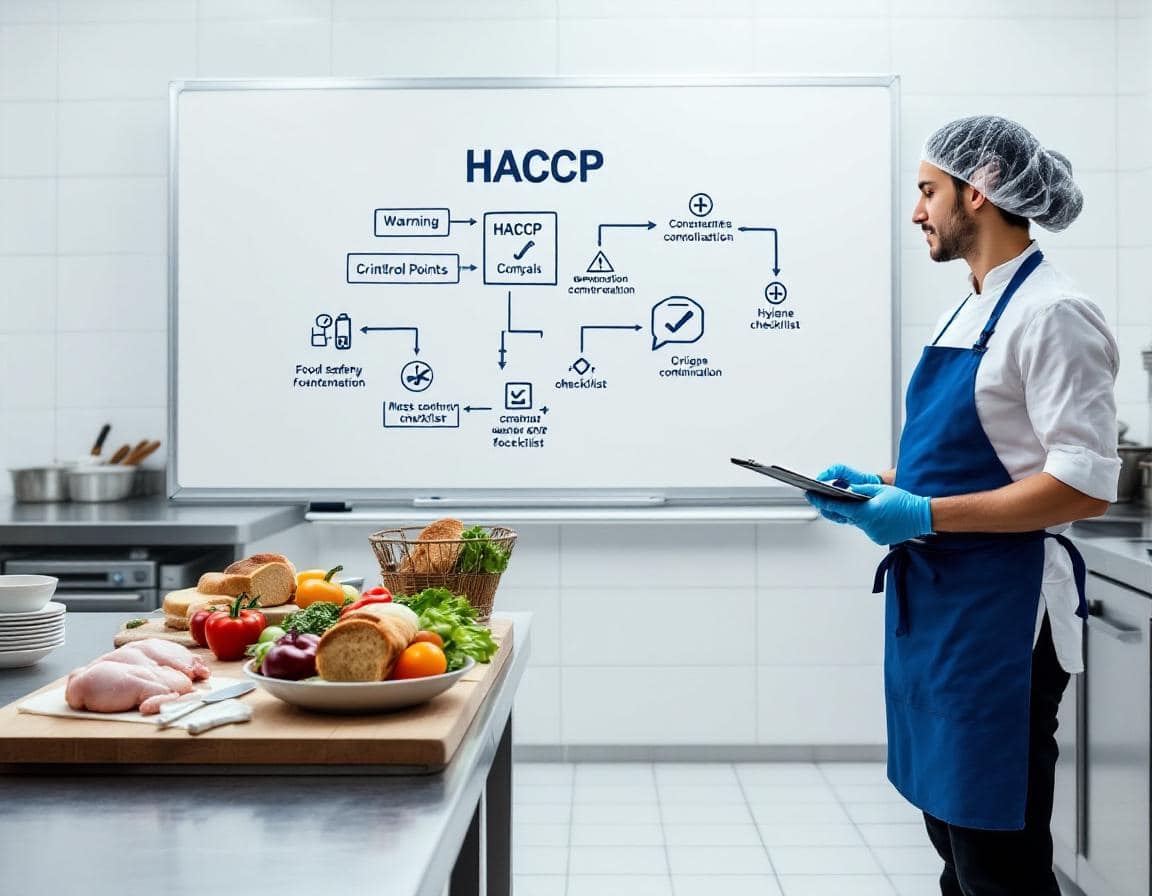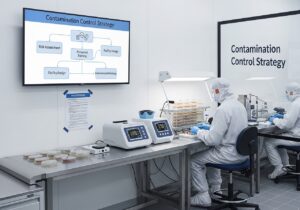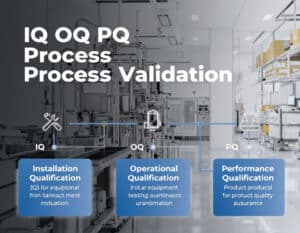In the sectors of food manufacturing and processing, Hazard Analysis and Critical Control Points (HACCP) stands as a professional نطاق for ensuring safety and compliance in the food industry. Originating in the 1960s to safeguard astronauts’ food from contamination, HACCP has since transformed into a globally recognized standard that drives food safety practices across various industries, including restaurants and food service, and pharmaceutical manufacturing.. This article will provide a comprehensive overview of HACCP, detailing its history, the seven foundational principles, steps for developing and implementing a robust HACCP plan, and the identification of biological, chemical, and physical hazards.
النقاط الرئيسية

- HACCP ensures safe food through systematic prevention.
- Seven principles guide hazard management effectively.
- CCPs are determined via decision-making frameworks.
- Implementation reduces risks and supports compliance.
- Prerequisite programs strengthen overall safety processes.
The primary purpose of HACCP is to establish a framework that ensures food safety by identifying critical control points in the production process where hazards may occur. By focusing on prevention rather than inspection, facilities can proactively manage biological, chemical, and physical hazards.
Definition and History of HACCP
Hazard Analysis and Critical Control Points (HACCP) is a systematic approach designed to identify, evaluate, and control food safety hazards throughout the production process.

Originating in the late 1960s, HACCP was developed as a preventive measure to ensure food safety. The U.S. National الملاحة الجوية and Space Administration (NASA) initially implemented Hazard Analysis and Critical Control Points (HACCP) for the food provided to astronauts, as it was paramount to eliminate any risks that could compromise their health during missions. Today, HACCP principles have been adopted globally across various food industries.
Statistics show that the incidence of foodborne disease caused by pathogens can be significantly decreased with the application of HACCP principles, reportedly reducing salmonella infection rates by as much as 25% in certain food types.
Historically, HACCP gained international recognition when the Codex Alimentarius Commission adopted it as the standard for food safety management systems.
The systematic nature of HACCP allows it to be applied not only in food production but also in other sectors like pharmaceuticals and cosmetics where safety is paramount.
The Seven Principles of HACCP

- Conduct a hazard analysis: identify potential biological, chemical, and physical hazards at each stage of the food production process—from raw material sourcing to final consumption. Assess the risks associated with these hazards and determine appropriate control measures. This includes biological, chemical, and physical hazards that may be present in the manufacturing or processing stage. A systematic approach entails gathering data on previous incidents, conducting risk assessments, and considering inputs from various stakeholders. For instance, analysis from the Centers for Disease Control and Prevention (CDC) shows that approximately 48 million Americans become ill from foodborne illnesses each year, highlighting the importance of hazard identification.
- Determine the Critical Control Points (CCPs) within the process: CCPs are steps where control can be applied to prevent, eliminate, or reduce food safety hazards to acceptable levels. These points are often identified through flow diagrams and expert consultations. For example, in a poultry processing plant, critical control points could include cooking temperatures and cooling times. If these parameters are not met, the risk of pathogen survival increases significantly.
- Establish critical limits: set maximum or minimum values (e.g., temperature, time, pH) for each CCP that must be met to ensure the hazard is controlled. These limits distinguish between safe and unsafe operating conditions. For example, the FDA advises that poultry must be cooked to an internal temperature of 165°F (74°C) to control salmonella and other bacteria, but local criteria or situation can request that to be higher. Compliance with these limits is essential for ensuring food safety and regulatory adherence.
- Establish monitoring procedures: develop and implement procedures to monitor each CCP to ensure they remain within defined limits. Effective monitoring can utilize tools like temperature logs and digital sensing equipment to track compliance. A study conducted among various food manufacturers showed that companies implementing consistent monitoring reduced non-compliance incidents by over 20%.
- Establish Corrective Actions: define actions to be taken when monitoring indicates a deviation from an established critical limit. Corrective actions ensure that no unsafe product reaches the consumer and that the process is brought back under control and does not happen again.
- Establish التحقق procedures: carry out actions to ensure that the HACCP system is functioning properly. Verification can involve examining documentation, performing audits, and conducting tests to confirm that the system is delivering the expected results.
- Establish documentation and record-Keeping: maintain accurate and comprehensive records of all HACCP-related activities. Documentation should include hazard analyses, CCP monitoring, corrective actions, and verification procedures to demonstrate compliance and facilitate continuous improvement.
نصيحة: utilize automated systems where possible to facilitate real-time monitoring and record-keeping, enhancing traceability and compliance with food safety اللوائح.
Identifying Hazards in a Process
Identifying hazards within a production process is critical for food safety and quality assurance. These hazards can be categorized into three main types: biological, chemical, and physical:

- Biological hazards include harmful microorganisms like bacteria, viruses, and parasites that can contaminate food. For example, Salmonella and Escherichia coli are commonly cited bacteria that can lead to foodborne illnesses, impacting consumer health and industry liability. It is statistically documented that approximately 48 million people get sick each year in the United States due to foodborne pathogens, underscoring the importance of effective hazard identification.
- Chemical hazards encompass harmful substances that may unintentionally enter food products. These can be residues from pesticides, cleaning agents, and additive compounds used during production. To mitigate these risks, it is crucial to monitor and test the presence of these chemicals. For instance, the Environmental Protection Agency (EPA) enforces strict limits on pesticide residues to ensure products remain safe for consumption. A report from the Food and Drug Administration (FDA) noted that approximately 1% of food samples tested exceeded permissible pesticide residue levels.
- Physical hazards, on the other hand, are foreign objects that can contaminate food items, such as glass, metal shards, bone fragments, or stones. The presence of such hazards can cause severe injury to consumers and can threaten brand integrity. Implementing comprehensive inspection measures, especially during critical phases of production and processing lines, is essential. Documented cases have shown that consumer complaints regarding foreign objects can lead to multi-million dollar lawsuits and product recalls, highlighting the need for diligent hazard detection.
The process of...
You have read 48% of the article. The rest is for our community. Already a member? تسجيل الدخول
(وأيضًا لحماية المحتوى الأصلي لدينا من روبوتات الكشط)
مجتمع الابتكار العالمي
تسجيل الدخول أو التسجيل (100% مجاناً)
اطلع على بقية هذه المقالة وجميع المحتويات والأدوات الخاصة بالأعضاء فقط.
فقط المهندسون والمصنعون والمصممون والمسوقون الحقيقيون المحترفون.
لا روبوت، ولا كاره، ولا مرسل رسائل غير مرغوب فيها.
الأسئلة الشائعة
What is the definition and purpose of HACCP?
What are the seven principles of HACCP?
What are the steps to developing and implementing a HACCP plan?
How can biological, chemical, and physical hazards be identified in a process?
What methods can be used for determining Critical Control Points (CCPs)?
What role do prerequisite programs play in supporting HACCP?
In which industries is HACCP applicable?
مواضيع ذات صلة
- Risk Assessment Techniques: methods used to evaluate potential risks within food safety systems.
- Environmental Monitoring: techniques employed to assess contamination levels in food production environments.
- Supplier Audits: evaluations of suppliers to ensure they comply with food safety المعايير that support HACCP.
- Traceability Systems: mechanisms for tracking ingredients from source to end product to ensure safety.
- Food Safety Culture: the shared values and behaviors regarding food safety within an organization.
- Crisis Management Plans: strategies to effectively manage food safety emergencies or product recalls.
- Quality Assurance Programs: systematic policies to maintain quality and safety in food production processes.
- Hygiene Practices: protocols that ensure cleanliness in the production and preparation of food products.
- Regulatory Compliance: adherence to local, national, and international food safety regulations and guidelines.
- Process Flow Diagrams: visual representations outlining each step in the food manufacturing process.
- التحكم الإحصائي في العمليات: use of statistical methods to monitor and control food production processes.
External Links on Hazard Analysis And Critical Control Points (HACCP)
المعايير الدولية
(حرك الرابط لرؤية وصفنا للمحتوى)
Glossary of Terms Used
Critical Control Points (CCP): مراحل محددة في العملية، حيث يُمكن تطبيق الرقابة لمنع أو القضاء على أو تقليل مخاطر سلامة الغذاء إلى مستويات مقبولة. يُعدّ تحديد هذه النقاط أساسيًا لتحليل المخاطر بفعالية وإدارة الرقابة الحرجة في أنظمة إنتاج الغذاء.
Food and Drug Administration (FDA): وكالة اتحادية تابعة لوزارة الصحة والخدمات الإنسانية الأمريكية مسؤولة عن تنظيم سلامة الأغذية والأدوية والأجهزة الطبية ومستحضرات التجميل ومنتجات التبغ لضمان الصحة العامة والسلامة من خلال التقييم العلمي وإنفاذ معايير الامتثال.
Good Manufacturing Practice (GMP): نظام يضمن إنتاج المنتجات ومراقبتها باستمرار وفقًا لمعايير الجودة، مما يقلل من المخاطر المرتبطة بإنتاج الأدوية والصناعات ذات الصلة. ويشمل إرشادات لعمليات التصنيع، وظروف المنشأة، ومؤهلات الموظفين، وممارسات التوثيق لضمان سلامة المنتج وفعاليته.
Hazard Analysis and Critical Control Points (HACCP): نهج منهجي لسلامة الغذاء يعمل على تحديد المخاطر وتقييمها والسيطرة عليها عند نقاط حرجة في عملية الإنتاج لمنع الأمراض المنقولة بالغذاء وضمان سلامة المنتج.
Network-attached storage (NAS): جهاز تخزين متصل بشبكة، يتيح الوصول إلى البيانات ومشاركتها بين عدة مستخدمين وأجهزة، ويوفر عادةً تخزينًا مركزيًا للملفات، ونسخًا احتياطيًا، وإدارتها. يعمل بشكل مستقل عن جهاز الكمبيوتر، ويمكن الوصول إليه عبر بروتوكولات الشبكة القياسية.
Statistical Process Control (SPC): a الطريقة of quality control that employs statistical techniques to monitor and control a process, ensuring it operates at its full potential by identifying variations and maintaining consistent output within specified limits.











How do you think is HACCP cost-effective HACCP for small-scale industries, given the complexity of implementing all seven principles…
HACCPs complexity is its strength. Small-scale industries need it the most. Cost-effective? Depends on your safety priority.
منشورات ذات صلة
استراتيجية مكافحة التلوث والغرف النظيفة: 26 أفضل الممارسات
من GMP إلى cGMP: دليل الإتقان الكامل
التحقق من صحة عملية IQ OQ PQ: النظرية الكاملة والتطبيق العملي
استراتيجيات "الجوز الوحيد"، و"التابع الأول"، و"التابع السريع"
أفضل 20 استخدامًا للوكلاء في الهندسة
كيفية بيع الثلج للإسكيمو (أو بالأحرى حيل التسويق)